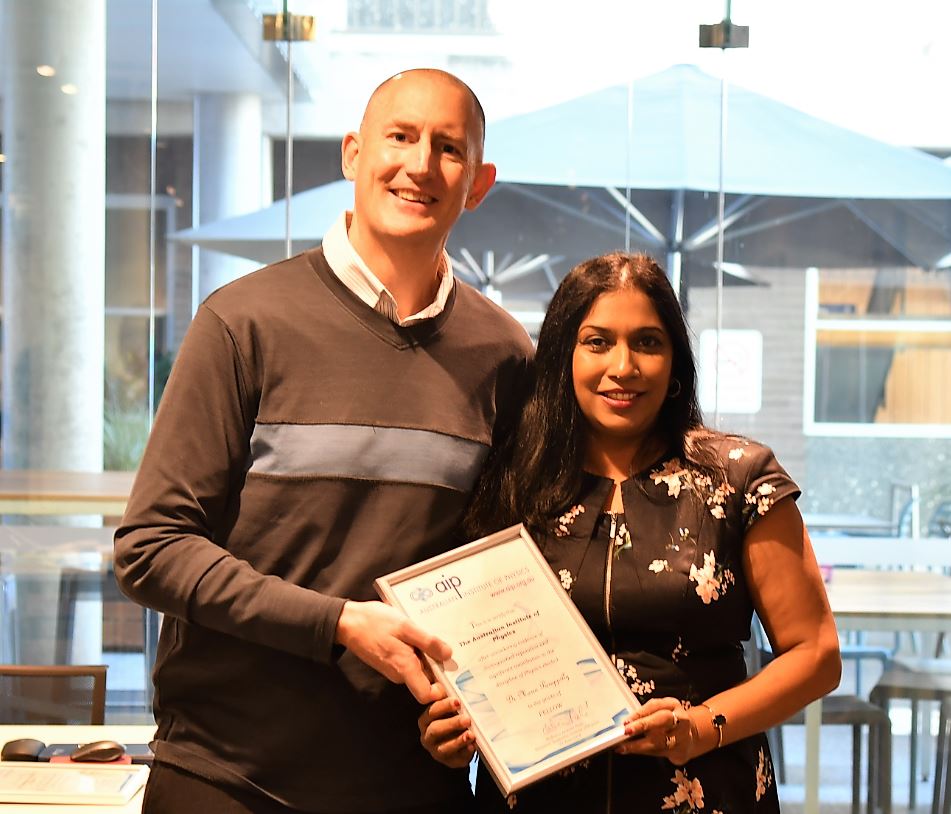
The pioneering teaching methods of Flinders physics educator, Dr Maria Parappilly, have seen her elected as a Fellow of the Australian Institute of Physics.
The Fellowship, which includes some of Australia’s most eminent scientists, was bestowed on Dr Parappilly, Flinders University’s Research Section Head of STEM Education, for her tireless and innovative physics teaching methods and research.
Dr Parappilly says the election was an honour, and she hoped it would inspire more girls to study physics.
“You do see a lot of gender imbalance in physics and so this [becoming a Fellow] helps make women in physics more visible, showing girls that they can do it too,” Dr Parappilly says.
“It also sends a clear message and is inspiration for more physics educators to innovate new approaches to teaching, and to publish physics education research to keep striving for student retention in physics courses.”
Australian Institute of Physics (AIP) President Professor Andrew Peele says AIP Fellows were people “seen to contribute at a very high level in physics and have a real impact”.
“Maria is certainly one of those people,” Professor Peele says.
“She’s done fantastic work raising awareness of the importance of having women and good role models in physics, and the importance of education, and these are some of the reasons for her elevation to the Fellowship.”
Dr Parappilly was formally inducted into the Fellowship at a presentation at Flinders University this week. She is one of only a handful of Australian physicists elected annually.
Representing the nation’s top physicists, the Fellowship boasts about 200 living fellows including eminent scientists such as Nobel Prize-winner Professor Brian Schmidt.
Dr Parappilly is Flinders’ second AIP Fellow (the first was Professor Michael Brunger), and the University’s only woman to receive the honour so far.
The Fellowship election is the latest in a string of recent state, national and international awards, honouring her innovative, creative and research-led approaches to teaching.
Last month she was the lead applicant in a winning grant application for a Federal Government Women in STEM and Entrepreneurship (WISE) Grant of $167,960, for a program to increase the number of female students studying engineering and physics at universities.
In 2017 she joined the SA Women’s Honour Roll, won the international D2L Innovation Award in Teaching and Learning (Physics, Canada) and garnered media coverage around the world for her research on using Lego to teach physics.
Dr Parappilly and the Women in STEM Branching Out group at Flinders University have been instrumental in engaging with a wide range of University and secondary school students, including through the annual Aurora photographic competition.

